.

What Do You Need for a Grow Tent?
Get ready to master indoor growing! Find out everything you need to know about setting up a cannabis grow tent, essential gear, and the key steps to a successful first grow.
Contents:
- Why use a grow tent for indoor growing?
- Choosing the right grow tent size and type
- Grow tent equipment checklist
- Picking a growing system: soil or hydroponics?
- Nutrients, grow mediums & watering systems
- Setting up your grow tent: step-by-step guide
- Common mistakes beginners make (and how to avoid them)
- Budgeting your grow tent setup
- Final thoughts: building the best beginner grow tent setup
So, you’ve decided to grow cannabis indoors, but you’re wondering what you need for your grow tent. Fortunately, we’re here to cover the best grow tent setup for beginners—though intermediate growers can also use this article as a handy checklist! Get ready to learn everything you need to know, from tent sizes and essential equipment to a step-by-step setup guide for your first grow tent!
Why Use a Grow Tent for Indoor Growing?
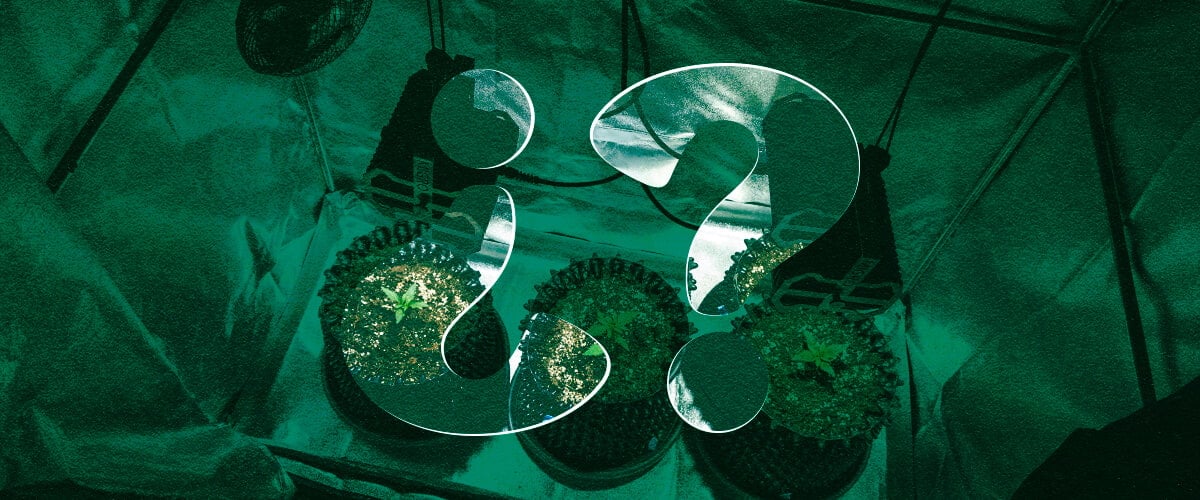
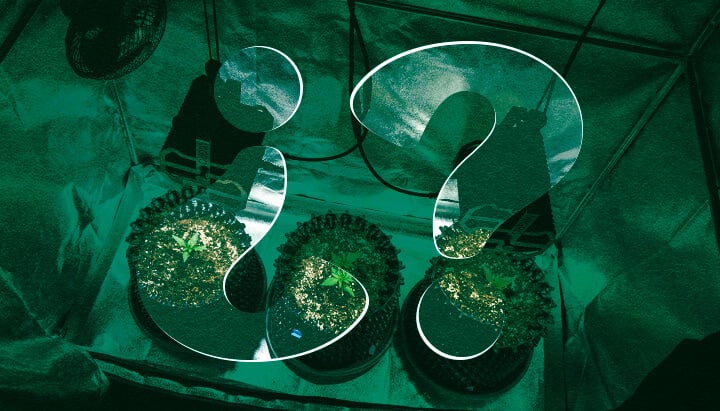
Grow tents are perfect for first-time indoor cultivators. They’re convenient, easy to set up, cost-effective, durable, and, most importantly, allow for a highly controlled growing environment.
They can be found in various sizes to suit different spaces, creating a private and discreet grow haven. Grow tents are optimal for small spaces, such as a small bedroom, and are a stress-free way to grow when living in an apartment or renting a property.
Choosing the Right Grow Tent Size and Type
The grow tent you buy will depend on the dimensions of your chosen space, the number of plants you wish to grow, and the equipment you will use. Are you growing with pots and soil or using a hydroponic system? Are you aiming to maximise a single plant’s growth, or optimise yields per square metre?
Your budget will also be a deciding factor. Regardless, your tent should be lined with a durable, reflective material with easy-access zippers for opening and closing to achieve the best results.
Below, we compare small, medium, and large-sized grow tents so you can determine which setup is best.
Small Grow Tents (Best for 1–2 Plants)
Small grow tents typically measure around 80×80 cm (~2.6×2.6 ft) and are suitable for growing 1–2 cannabis plants. This setup works best with a low-wattage LED, which also ensures the small space doesn’t get too hot.
- Well suited for first-time growers
- Doesn’t use large amounts of electricity
- Only requires a low-wattage LED light
- LEDs produce a low amount of heat
- Perfect for 1–2 small photoperiod cannabis plants
- Perfect for 1–2 full-sized autoflowering plants
- Discreet and stealthy size
- Cheapest grow tent option
Medium Grow Tents (Best for 2–3 Plants)
Medium-sized grow tents measure 100×100 cm (~3.3×3.3 ft) and can fit 2–3 cannabis plants. This size tent also gives growers more space for plant training and allows for increased airflow between each plant.
- You can train plants using LST, SOG, or topping
- More space between the plants while they grow
- Perfect for 2–3 medium-sized photoperiod cannabis plants
- Perfect for 2–3 full-sized autoflowering plants
- Medium-wattage LEDs support vigorous plant growth
Large Grow Tents (Best for 4–5 Plants)
A large tent is the most expensive option for beginner growers. The tent will be around 120×120 cm (~4×4 ft) and can run higher-wattage LEDs, larger-sized oscillating fans, inline fans, and extractor fans. It’s ideal for those planning to grow 4–5 cannabis plants or multiple strains.
- Best suited for 4–5 medium-large photoperiod cannabis plants
- Perfect for 4–5 large autoflowering cannabis plants
- Easier to work with hydroponic systems
- Easy to add multiple fans to create air movement
- Supports high-wattage LEDs and 1–2 grow lights
- Most expensive option
Grow Tent Equipment Checklist
Though we’ve alluded to some of the necessary pieces of kit, what grow equipment is required for setting up a beginner grow tent? Below is a brief explanation of what you need to source to ensure success.
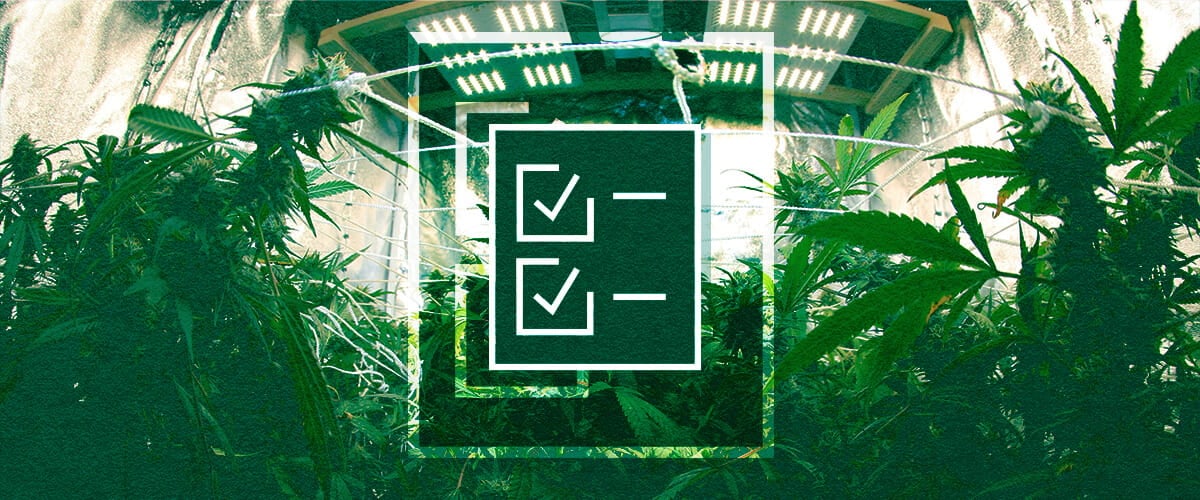
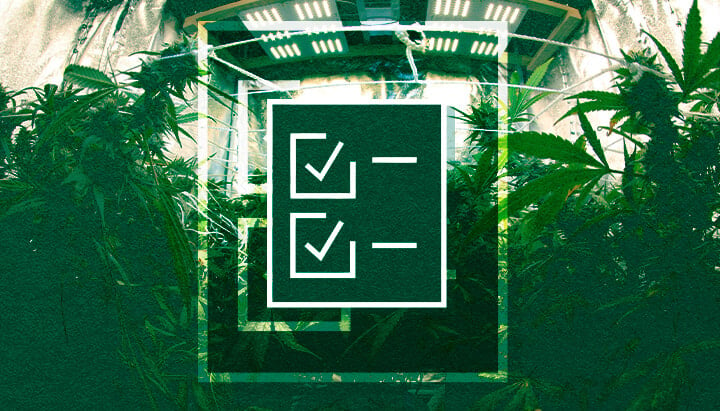
Grow Lights (LEDs Recommended for Beginners)
Grow lights turn your seedlings into beautiful, healthy, and vibrant plants with delicious, resinous buds! You can choose between LED, high-intensity discharge (HID), or T5 fluorescent strip lights for your grow tent.
We recommend using LED lights due to their efficacy, superior PAR production, low power consumption, and minimal heat signature. Below are the pros and cons of each lighting option, as well as the recommended wattage for an LED grow tent setup.
- LED: Highly recommended for indoor growers thanks to its excellent efficiency and ability to grow phenomenal cannabis. LED lights provide the optimal spectrum and photoactive radiation (PAR). They emit a small amount of heat, making temperature and humidity control far easier compared to HID.
- HID: These lights are a time-tested standard, with metal halide (MH) used for the veg stage and high-pressure sodium (HPS) for flowering. They require a ballast and reflector and are available in 250 W, 400 W, 600 W, and 1000 W configurations. Beware that HID lights can produce high amounts of heat and are less energy-efficient than LED lights.
- T5: These compact fluorescents are ideal for the seedling stage, clones, and small vegetating plants. Note that T5 lights are not adequate for growing cannabis from seed to harvest as they do not provide enough intensity or PAR for flowering.
Small Tent: 80×80 cm (~2.6×2.6 ft) Grow Light Wattage
- LED: 150 W
- HID: 400 W
Mars Hydro FC1500 – 150 W LED Grow Light
|
|
660-665nm, 2800-3000K, 4800-5000K |
|
|
41x40x7.2cm |
|
|
150W±5% |
|
|
2.85μmol/j |
|
|
427.5μmol/S |
|
|
Samsung LM301H EVO |
|
|
70x70cm |
|
|
3.5g/watt |
Buy Mars Hydro FC1500 – 150 W LED Grow Light
Medium Tent 100×100 cm (~3.3×3.3 ft) Grow Light Wattage
- LED: 300 W
- HID: 600 W
Mars Hydro FC3000 – 300 W LED Grow Light
|
|
660-665nm, 2800-3000K, 4800-5000K |
|
|
59.5x54x6.1 cm |
|
|
300W±5% |
|
|
2.85μmol/j |
|
|
855μmol/S |
|
|
Samsung LM301H EVO |
|
|
90x90 cm |
|
|
3.5g/watt |
Buy Mars Hydro FC3000 – 300 W LED Grow Light
Large Tent 120×120 cm (~4×4 ft) Grow Light Wattage
- LED: 480 W
- HID: 600 W
Mars Hydro FC4800 – 480W LED Grow Light
|
|
660-665nm, 2800-3000K, 4800-5000K |
|
|
84x84x8 cm |
|
|
480W±5% |
|
|
2.85μmol/j |
|
|
1368μmol/S |
|
|
Samsung LM301H EVO |
|
|
120x120 cm |
|
|
3.5g/watt |
Buy Mars Hydro FC4800 – 480W LED Grow Light
Ventilation System
The key to a successful indoor grow is constant air exchange. This is achieved by using circulation fans to move air through the system, aluminium ducting, and a carbon filter. Hot air must be removed from the highest point in the tent, as cooler, fresh air is blown in at the bottom.
Using an extractor and ducting will allow you to control and maintain the temperature and amount of heat in the grow room. The carbon filter is designed to remove hot air while scrubbing it clean, eliminating pungent plant odours.
It’s important to make sure your ducting is airtight and well-sealed. Thick, heavy-duty aluminium foil tape is an excellent way to produce a solid and firm fit. Metal clips to attach the ducting are also well recommended. Use a top-quality extractor and carbon filter, and avoid cheap grow tent equipment.
Circulation Fans
Circulation fans play a significant role in plant health, enhancing stem strength, keeping plants cool and happy, and preventing mould and mildew during the flowering stage.
- Oscillating fans: These fans come in different sizes, ranging from 15–30 cm, and are typically placed on the tent's floor. A small tent will easily fit one oscillating fan, while a large tent can run two oscillating fans at a time.
- Clip-on fans: These are typically available in sizes of 15–20 cm. They do not provide as much air current as oscillating fans, but they are well-suited for smaller grow tents and do not take up much space.
Timers and Controllers
Timers are a fundamental part of growing photoperiod cannabis plants. They control the hours of lighting each day, fans, and hydroponic pumps. Many cannabis plants are phototropic, requiring a light/dark cycle of 18/6 to vegetate or 12/12 to induce and sustain flowering. Autoflowering cannabis plants are the exception—they’re not dependent on specific light cycles and can be grown under an 18/6 or 20/4 cycle for both vegetation and flowering.
Mechanical vs Smart Timers
Mechanical timers are simple but reliable. They involve pushing down the plastic segments and setting the preferred ratio of light to dark. Smart timers, on the other hand, have a digital face and can be programmed to control fans, lights, and pumps. If you like the idea of a modern digital timer, we recommend looking into Wi-Fi and app-based timers that can connect directly to your mobile phone.
Power Strip and Cable Management
Safe power management should be your priority when working with electricity and water. Avoid the common mistake of leaving cables and plug extensions on the tent floor.
It’s recommended to use surge protection to prevent power cuts. Labelling plug sockets makes life much easier and is a practical way to set up indoor equipment. Keep your power cables and wires neat and out of the way to avoid tripping over them, and try Velcro straps, cable hooks, or plastic cable ties.
Thermometer, Hygrometer, and Monitoring Tools
Once you have set up a grow tent with your grow lights, extractor, ducting, and carbon filter, you need to ensure optimal temperature and humidity. Cannabis plants rely on the correct settings for each stage of their life cycle, so environmental control is an essential part of any indoor grow.
- Thermometer: For a cheap option, you can use a basic mercury-level greenhouse thermometer inside your grow tent, though a digital thermometer with a sensor will offer the most accurate reading.
- Hygrometer: Humidity refers to the amount of moisture present in the air. Cannabis plants require different humidity levels throughout their life cycle, and controlling the humidity is the key to a mould-free crop. A digital hygrometer lets you see the humidity and, in most cases, the temperature. Even the most basic digital hygrometers can tell you the lowest and highest settings over 24 hours.
Picking a Growing System: Soil or Hydroponics?
As a first-time grower, it can be challenging to know where to start growing weed. Should you keep it simple and use soil, or take on the challenge of a soilless hydroponic system? Below are the pros and cons of both, allowing you to decide better which is most practical for you.
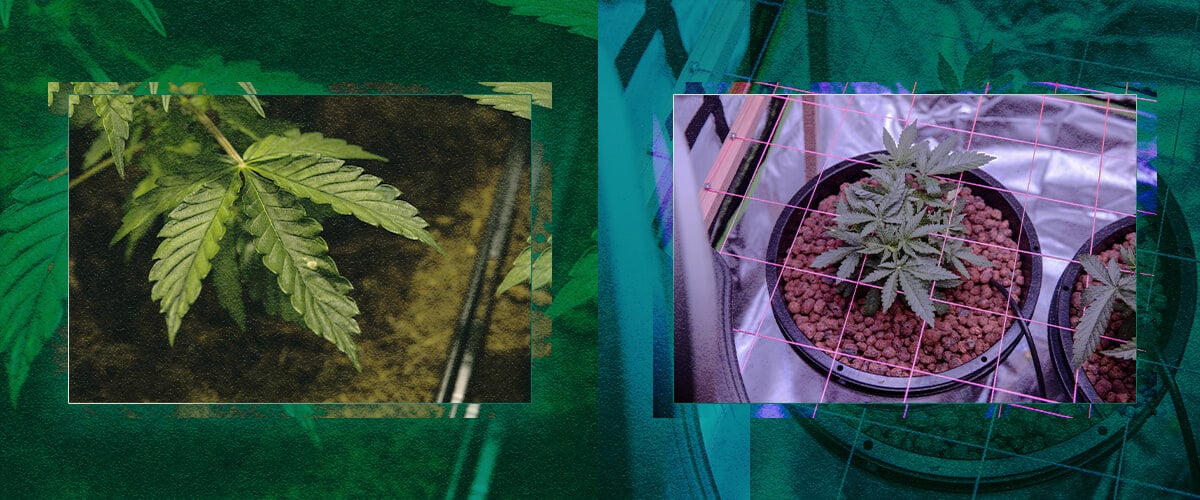
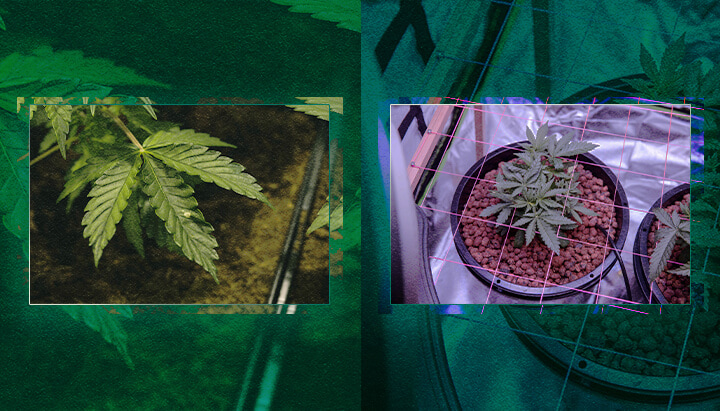
Organic Soil Grow: Pros & Cons
Pros:
- Soil is easy to buy and can be sourced locally
- Ideal for first-time growers
- Most soils contain nutrients plants need
- Soil-grown plants handle slight environmental fluctuations better than hydro-grown plants
- Growing in soil can be less expensive, depending on the setup
Cons:
- Bags can be heavy and difficult to transport
- Soil can be messy and leave a tent dirty
- Overwatering is easy to do
- Not all soils are optimal for growing cannabis
- Some soils contain chemical nutrients
- Soil-grown cannabis yields can sometimes be smaller than with hydro
Hydroponic Systems: Pros & Cons
Pros:
- Hydroponic systems use sterile growing substrates
- Yields are often superior when using hydroponics
- Hydro is ideal for growing large plants in small spaces
- Only a short vegetation time is required with hydro systems
- There are many types of systems, such as DWC, aeroponics, and drippers.
Cons:
- Better suited for experienced growers
- Controlling pH and EC can be hard work for a beginner
- Hydroponic nutrients are expensive
- Systems rely on electricity and are unreliable if there is a power cut
- Plants grown in hydro can easily suffer from nutrient lockout
- Hydroponic systems are expensive and can take up a lot of space
- If a pump fails, the system is compromised
Nutrients, Grow Mediums & Watering Systems
The next step in our grow tent setup guide for beginners is to learn about the growing medium, nutrients, and watering methods.
Cannabis plants require nitrogen, phosphorus, and potassium as primary nutrients, calcium and magnesium as secondary nutrients, followed by a slew of trace elements. Below is a brief overview of different growing mediums that can be used for indoor cannabis.
- Soil: Made from organic material that slowly feeds the plants nutrients, most soils are mixed with perlite and compost and should have good aeration, drainage, and wicking ability.
- Coco coir: Made from washed and treated coconut husks, coco coir contains no nutrients. Therefore, specific nutrients designed for coco coir must be used.
- Rockwool: Rockwool is especially suited to hydroponic applications. Under the right circumstances, it can hold vast amounts of water and produce superb yields.
- Hydroponic clay pellets: Clay pebbles, which contain no nutrients and need to be washed and cleaned before use, are used for deep water culture, aquaponics, and dripper systems.
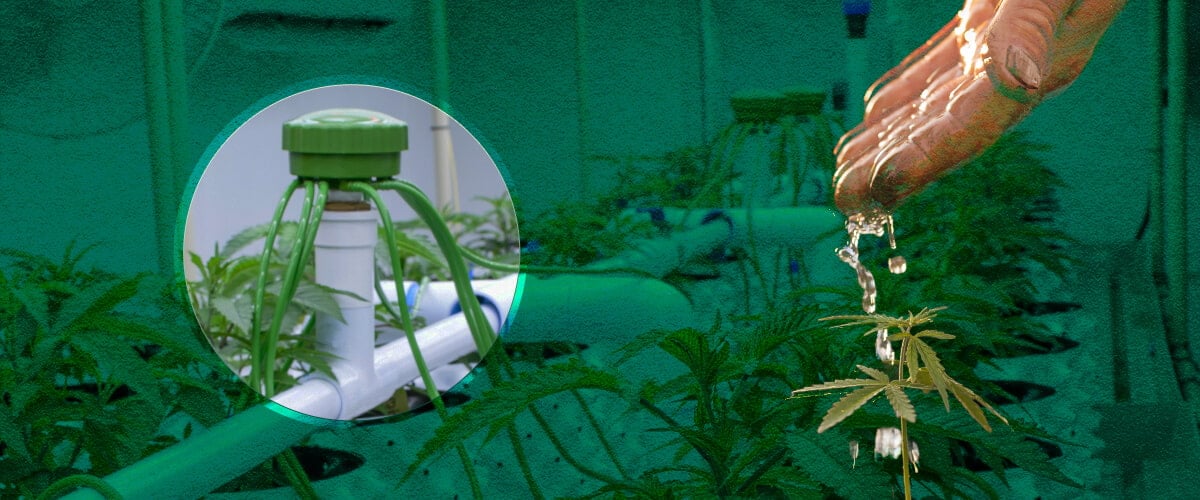
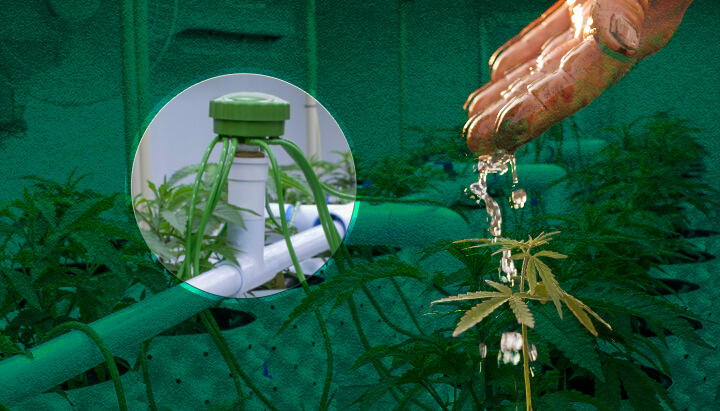
Basic Watering Options
Here are three common watering/feeding methods used in grow tents:
- Hand watering: This is the simplest and most practical method for beginners. All you need is a measuring jug to decide whether to water from the top of the pot or feed from the bottom using a saucer.
- Dripper method: Dripper lines connected to a pump and dripper stakes allow plants to be systematically fed based on a timer. This method is best suited for experienced growers using hydroponic systems.
- Recirculating method: A pump will recirculate nutrient solution from a hydroponic system reservoir tank. Recirculating systems require drip lines, a drip ring, or dripper stakes. This method is best suited for experienced hydro growers.
Setting Up Your Grow Tent: Step-by-Step Guide
With your equipment ready, you’re just one final step away from setting up your grow tent. Below is a step-by-step guide to help you become a full-time indoor grower!
Step 1: Assemble the Tent
Open the box and lay out all parts needed for assembly. Use the instruction guide provided by the manufacturer to assemble the poles, corners, and tent cover.
Step 2: Install Lights & Fans
Once you have set up the tent, hang your grow lights inside, attaching them to the poles at the top of the grow tent. Leave enough space for the extractor, ducting, and carbon filter.
Step 3: Connect Power and Timers
Set your timer to an 18/6 light cycle and plug it in. Now, connect your power cables to your equipment and ensure everything is as neat as possible. Use Velcro or cable ties if necessary.
Step 4: Check Temperature & Humidity
Observe the temperature and humidity inside the tent. For the seedling and vegetative stages, you want it to be 24°C and 60–70% humidity.
Step 5: Add Plants and Start Growing!
Add your pots and chosen growing medium. Water them to achieve the proper moisture levels and label the pots if growing different strains at once.
Common Mistakes Beginners Make (and How to Avoid Them)
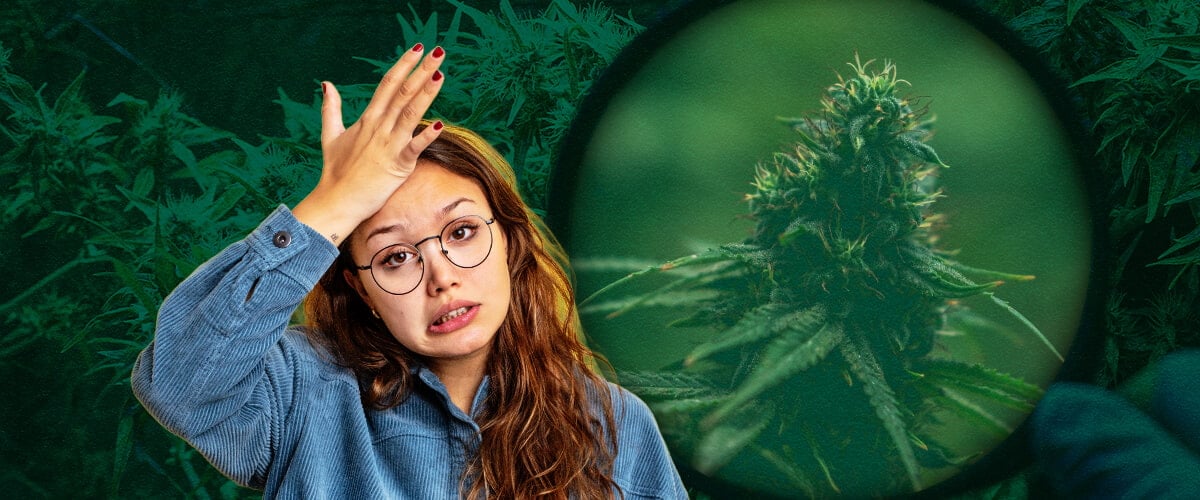

Even with careful planning—and help from this guide—mistakes happen. However, the more you know, the more likely you’ll avoid major issues that can harm plants. Below are some common issues alongside solutions and grow tent tips to ensure success.
- Overwatering: This is easy to fall victim to, but it’s one of the most threatening dangers to your plants. If growing hydroponically, ensure your system provides the right amount of both moisture and oxygen. In soil, only water when the top few centimetres of topsoil are fully dry.
- Poor ventilation and inadequate canopy space: A small fan or two may be enough to ensure adequate airflow in a small tent, but larger tents or those housing multiple plants require a consistent intake of fresh air and exhaust of stale air. Ensure your plants have space between them so that stagnant air doesn’t form.
- Weak lighting: Weak light or the incorrect type of light can lead to leggy yet fragile plants. Make sure you’re using the correct type of light for the stage of growth, and that the lights are hung from the recommended distance from the plant tips.
- Skipping pH testing: pH testing ensures your growing medium is within the correct range to allow plants to successfully uptake nutrients. Plants grown hydroponically prefer a pH of 5.5–6.0, while soil-grown plants like 6.0–7.0.
- Not checking for pests: Even when growing indoors, pests can happen. Check on and under the leaves, along the stems and branches, and on the developing buds.
- Heat stress: Finally, make sure you don’t subject your plants to excess heat. Fortunately, this is easy to avoid when growing with LEDs, while HIDs are known for pushing temperatures, and therefore may require additional cooling.
Budgeting Your Grow Tent Setup
Considering all the above, how much does it cost to set up a beginner grow tent? On average, expect startup costs to range from €300–800. This includes the tent itself, lights, fans, a timer, nutrients, etc. That being said, grow tent kits are a convenient way to purchase everything you need to grow cannabis in one package.
Final Thoughts: Building the Best Beginner Grow Tent Setup
Now that you know what you need for a grow tent, and how to set one up, you are officially ready to start your hobby. Take the time to research the best grow tent setup for beginners, invest in top-quality grow tent equipment, and decide which Royal Queen Seeds strains you will grow. Growing great weed indoors is not as difficult as it looks—once you gain a little experience, you’ll be on your way to a fruitful harvest every time.

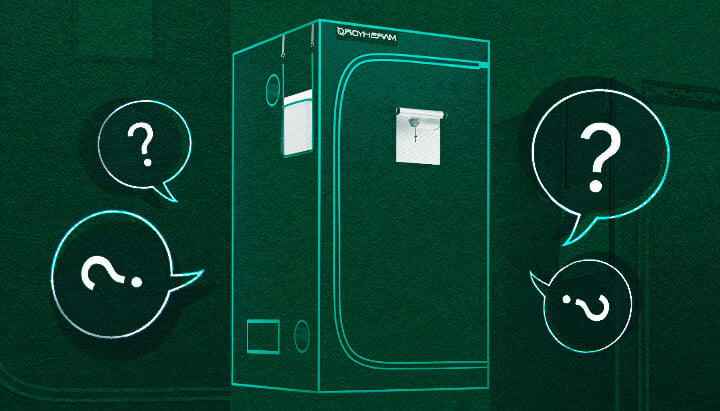
Frequently Asked Questions: Grow Tents for Beginners
- How much does it cost to set up a grow tent?
- The average price is around €300–800.
- Can I grow plants without a ventilation system?
- You will need a basic ventilation system, even if it’s just a single oscillating fan.
- Do grow tents keep the smell in?
- When used alongside a carbon filter, grow tents can help to contain the smell of cannabis.
- What's the best grow light for a small tent?
- Low-wattage LEDs are generally best for smaller tents.
- Do I need a carbon filter in my grow tent?
- If you’re concerned about the odour of your grow, a carbon filter is recommended.
- How long should lights stay on in a grow tent?
- This depends on the type of plant. For photoperiod plants, 18/6 for veg and 12/12 for flowering is recommended. For autos, you can use 18/6 for the entire grow cycle.
Categories
Grow Cannabis With RQS


























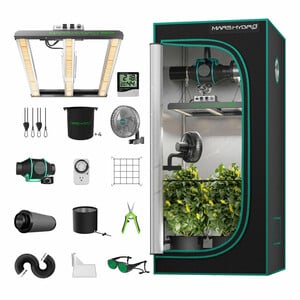
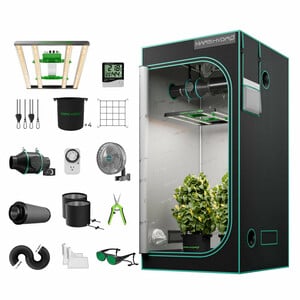
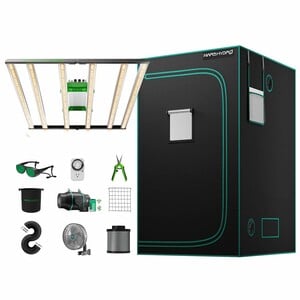
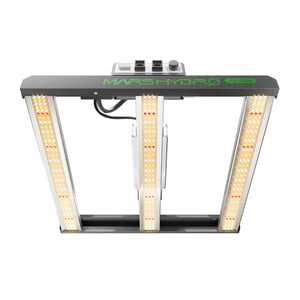
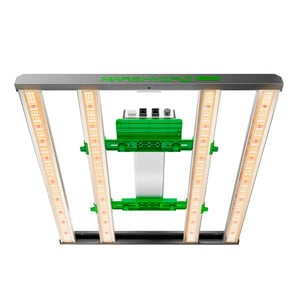
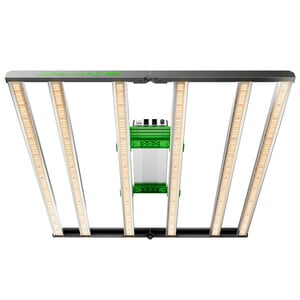
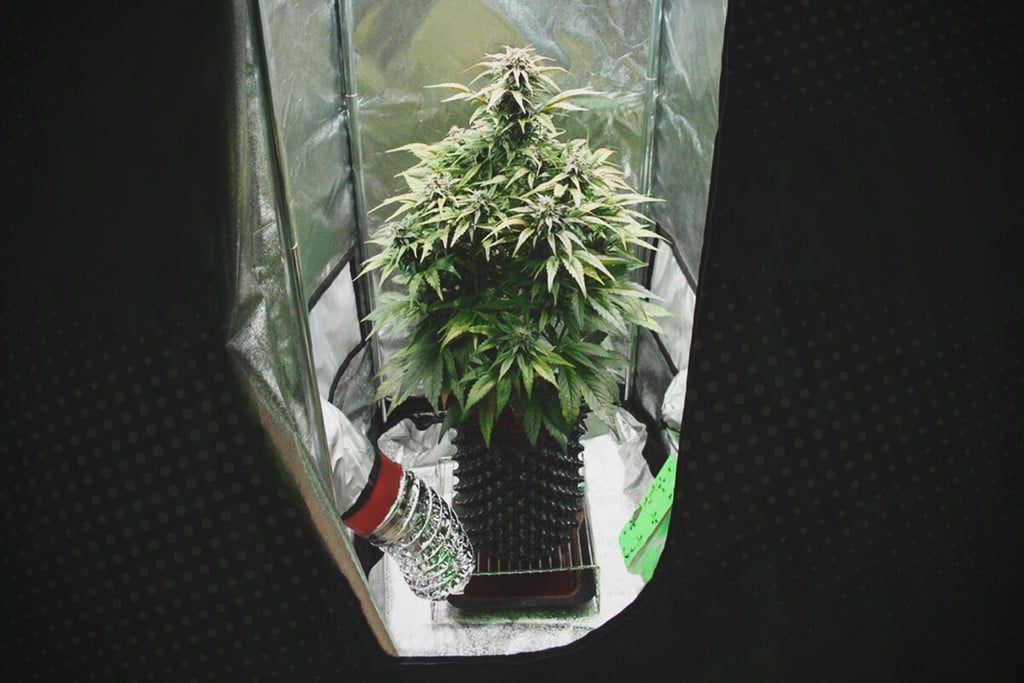
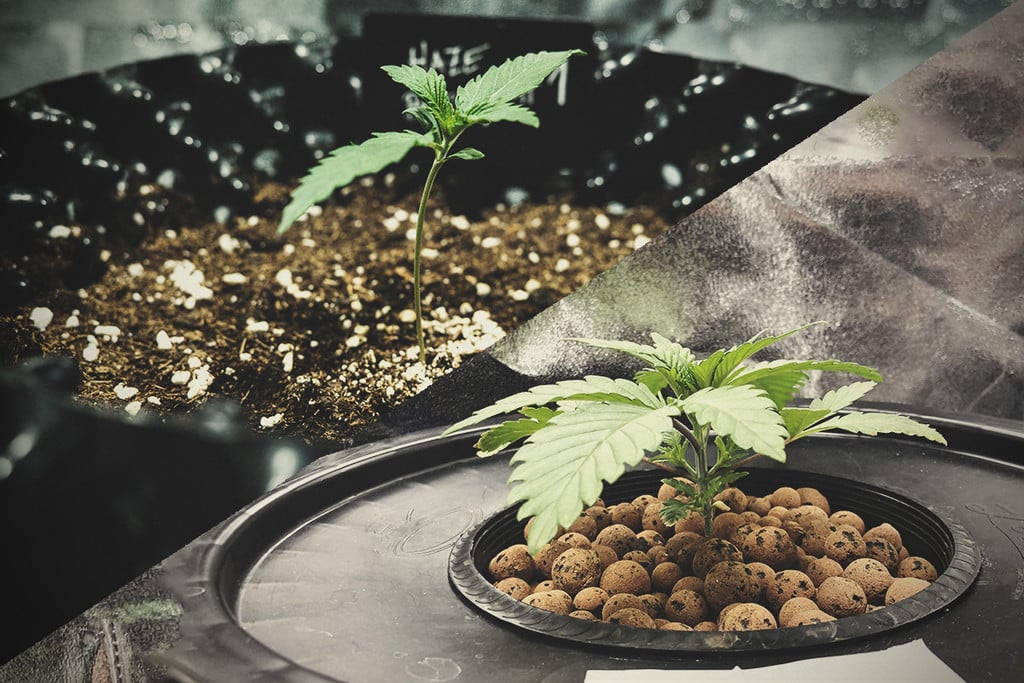
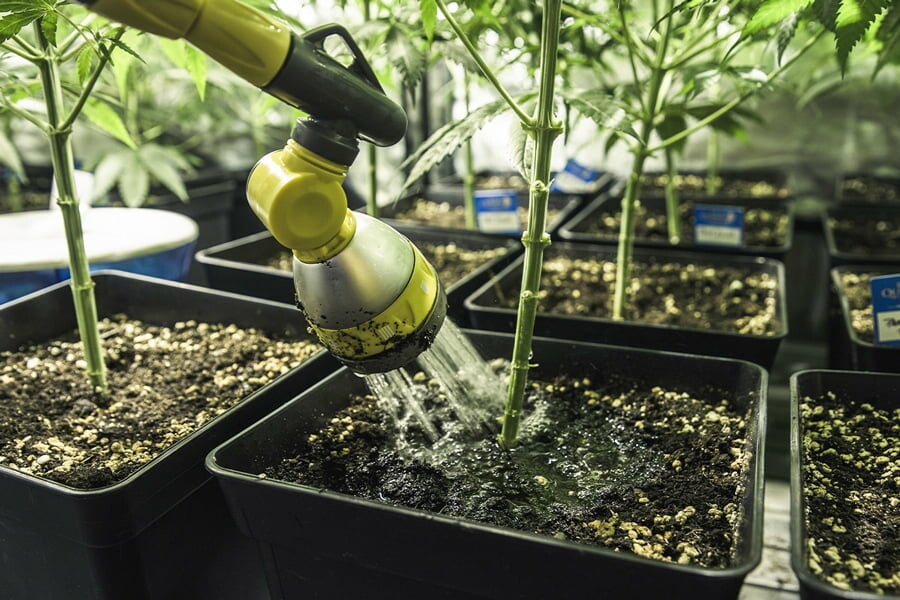
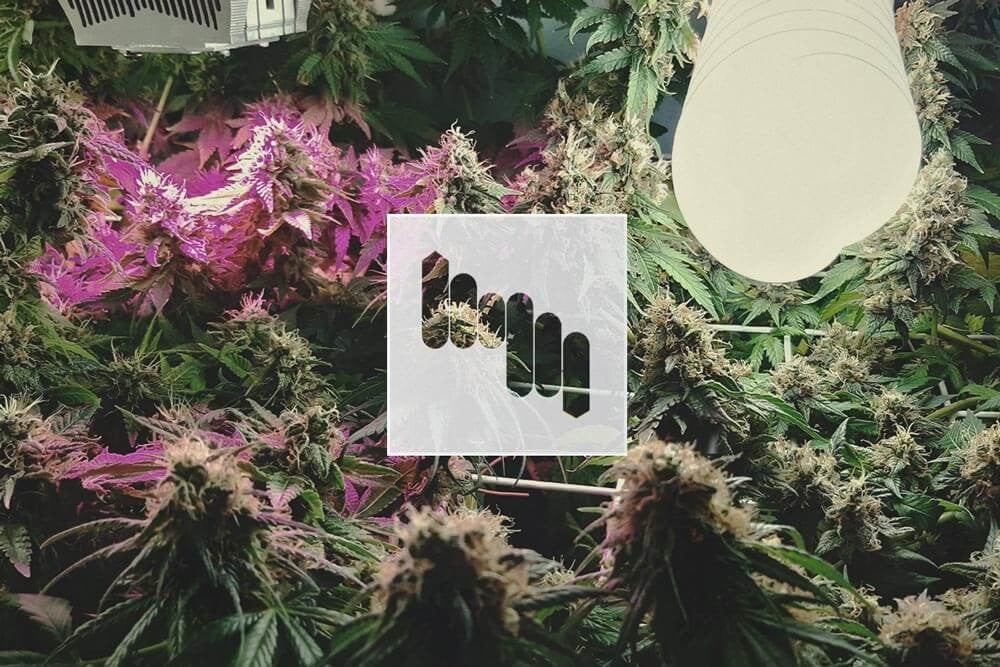
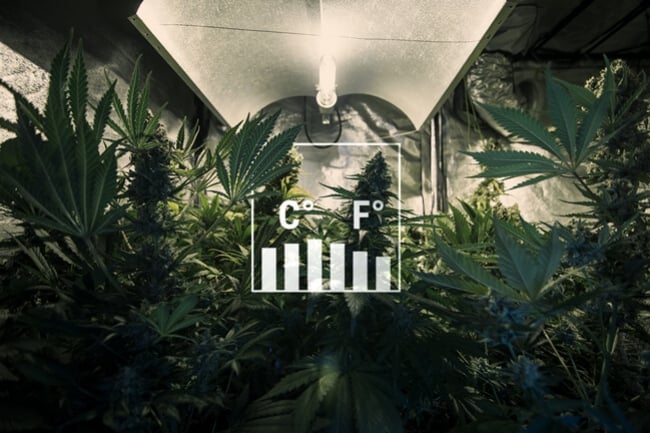
.jpg)







